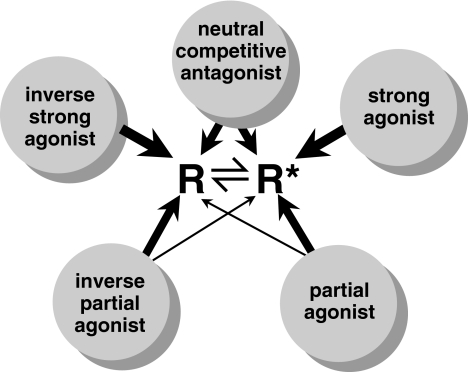Figure 3.
A schematic representation of how the two-state receptor model relates to the action of drugs as strong agonists, partial agonists, neutral competitive antagonists, inverse agonists, and inverse partial agonists. The inactive and active receptor conformations (R and R*, respectively) are in constant equilibrium. A strong agonist binds selectively to R*, driving the equilibrium between R and R* in favour of R*, resulting in enhanced response. A partial agonist has higher affinity for R* than for R, but with less selectivity than the strong agonist. The neutral competitive antagonist binds with equal affinity to both R and R*, so that it does not disturb the resting equilibrium and therefore does not alter basal response. An inverse strong agonist binds selectively to R, driving the equilibrium between R and R* in favour of R, resulting in decreased response, that is, when there is significant constitutive activity (basal response). An inverse partial agonist has higher affinity for R than for R*, but with less selectivity than the strong inverse agonist

